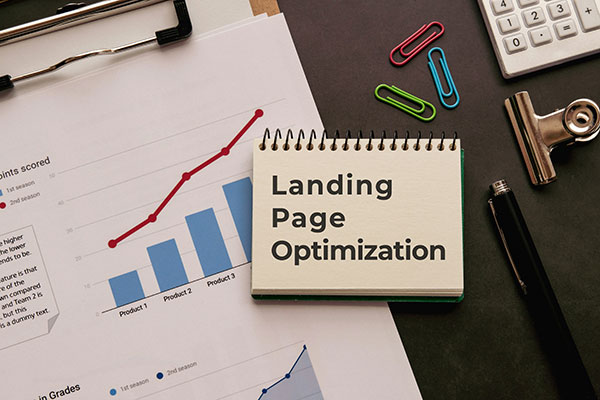Brand development is more than simply creating logos and color schemes in today’s cutthroat, digital-first world. It’s also about creating an identity that reflects your mission, connects with your target market, and fosters loyalty. Successful business operations depend on having a solid brand strategy, whether you’re starting from scratch or repositioning an established company.
What is Brand Development?
The strategic process of building a brand that appeal to your target audience on an intellectual and emotional level is known as brand development. It includes your voice, positioning, and customer experience in addition to your brand’s visual identity.
It’s what separates being the first name that springs to mind from just being a product or service.
Why Brand Development Matters?
A sophisticated brand is a commercial advantage for expanding companies, particularly in Minneapolis’s innovative and competitive market. This is why it’s important:
| Brand Development Benefit | Impact |
| Clear Differentiation | Stands out from generic competitors |
| Increased Trust & Loyalty | Builds deeper emotional connections with customers |
| Better Marketing ROI | Cohesive messaging improves campaign effectiveness |
| Higher Perceived Value | Justifies premium pricing through strong brand identity |
| Scalable Growth | Creates consistent experiences across products, platforms, and teams |
The Brand Development Process (Step-by-Step):
Let’s dissect a tried-and-true method for creating brands for contemporary, wellness-focused, and design-conscious customers and entrepreneurs:
Define Your Brand Core:
Start with the “why”—what drives your company? This includes:
- Brand Purpose – Why does your brand exist?
- Vision – What’s the long-term impact you hope to create?
- Mission – How do you deliver on your purpose daily?
- Core Values – What principles guide your behavior and decisions?
Example: A custom sauna brand may define its purpose as helping people restore wellness at home.
Know Your Audience Deeply:
Utilize your buyer persona, such as the Bespoken Directive one, to comprehend:
- Age, location, and occupation are examples of demographics
- Interests, values, and lifestyle are examples of psychographics.
- Problems: What issues are they attempting to resolve?
- Goals: How do they define happiness or success?
Tip: Interview real clients, not just marketing assumptions.
Audit Your Current Brand (If You Have One):
Determine what is and is not working:
- Is your visual identity consistent right now?
- Is your mission in line with your messaging?
- Do consumers identify with your brand?
Here, tools like competitor research, consumer feedback surveys, and brand audits are essential.
Create Your Brand Positioning Statement:
Your brand’s distinct place in the industry is outlined in this succinct and straightforward statement.
Format example, “Unlike [primary competitors], we assist [target audience] in achieving [certain benefit] by means of [unique solution or service].”
Example: “We help wellness-focused homeowners in Minneapolis create custom sauna spaces that blend luxury with natural living—unlike mass-produced solutions.”
Develop Your Brand Identity:
Your verbal and visual identity must be appealing to your audience and represent your ideals.
Important components:
- Brand markings and logo
- Typography and cooler scheme
- Tone and voice of the brand
- Style of photography
- Iconography and patterns
Pro tip: Use a brand style guide to ensure consistency across channels
Craft Your Messaging and Brand Story:
Words count. Develop message that speaks to your emotions and is consistent with who you are:
- Brand Story: What gave rise to your company?
- Tagline: Describe your elevator pitch in your tagline.
- Key Messages: What should clients take away from your website or information?
Use messaging frameworks like Story Brand or Golden Circle (Simon Sinek) for clarity.
Build a Content Strategy that Reflects Your Brand:
From your website to email marketing and social media, your content should:
- Be in line with your audience’s pain areas and your values.
- Educate, inspire, and convert.
- Speak in a constant tone.
Bonus: Incorporate SEO-optimized blog posts that highlight your expertise.
Launch Internally First:
Make sure your internal team is on the same page prior to the public rollout:
- Educate staff members on brand message and values.
- Offer tools and resources for your brand.
- If necessary, get internal input to improve the messaging.
Your team is your brand’s first ambassadors.
Activate the Brand Publicly:
Go live with a strategic rollout across:
- Website & blog
- Social media platforms (Instagram, Pinterest, LinkedIn, Facebook)
- Email marketing
- PR or influencer partnerships (especially for lifestyle brands)
- Digital ad campaigns
Consider a soft launch followed by a more targeted hard launch.
Measure, Adapt, and Evolve:
Outstanding brands change with their target market. Utilize important metrics to assess performance:
| Metric | Purpose |
| Website engagement | Are people connecting with your messaging? |
| Social media performance | Is your content building a community? |
| Conversion rate | Is your brand driving actions/sales? |
| Brand recall or sentiment | Do people remember or love your brand? |
Be ready to iterate as market conditions and customer expectations change.
Conclusion:
Building a brand is an ongoing process that is integral to the development of your company. Whether you’re a Minneapolis-based wellness business owner, design firm, or expansion-minded contractor, making an investment in brand development guarantees that people will remember you.
At Bespoken Directive, we don’t just build brands—we co-create identities that speak to your values, convert your audience, and grow with your business. Let’s craft your next chapter.



